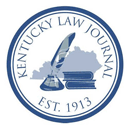UKnowledge > J. David Rosenberg College of Law > Law Journals > Kentucky Law Journal > Vol. 104 > Iss. 1 (2015-2016)
Abstract
Crowd-related injuries and deaths are startlingly common both in the United States and worldwide. They occur in a wide range of situations and at a vast array of venues: at music concerts, sporting events, retail holiday sales, in and around airports, subway plaorms, and parking lots, among other locations. These "crowd crush" incidents, however, are extremely underreported and rarely litigated, masking the seriousness of this issue and making it difficult for the few victims who pursue legal recourse to recover damages. Given that there is virtually no statutory law in the United States pertaining to crowd management and control, crowd crush cases are based entirely in common law, most often in the law of negligence. Unfortunately, courts have consistently made a number of analytical errors in these cases, creating a line of jurisprudence that is both scientifically and legally problematic and that reduces incentives for venue owners and event managers to take steps to reduce the likelihood of future crowd injuries. In this paper, I (a) identify the most signiicant of these errors, (b) explain why they contravene crowd science, and (c) make a series of recommendations designed to bring crowd crush jurisprudence in line with modern science and to level the playing field between plaintiffs and defendants in these cases.
Recommended Citation
Pearl, Tracy Hresko
(2015)
"Crowd Crush: How the Law Leaves American Crowds Unprotected,"
Kentucky Law Journal: Vol. 104:
Iss.
1, Article 4.
Available at:
https://uknowledge.uky.edu/klj/vol104/iss1/4
